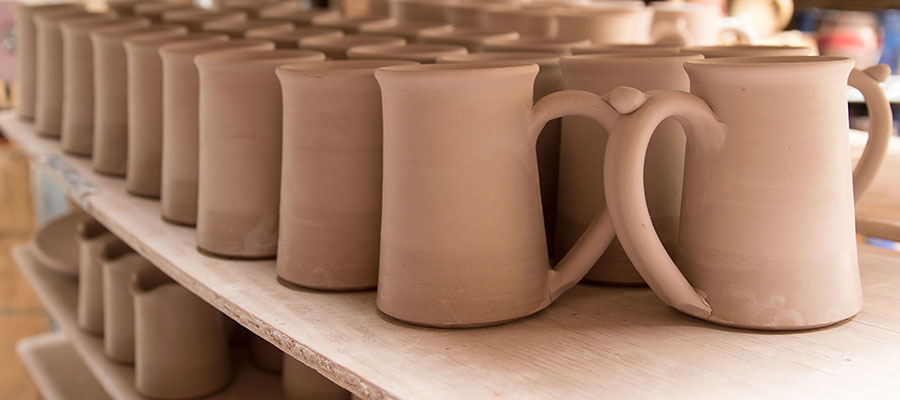'OOPS!' POTTERY & LIFE LESSONS

We just finished one of the most successful annual Memorial Day 'Oops!' Pottery sales since we purchased the store. When I began a career as a potter, I had not fired a kiln or ever mixed a batch of glazes, therefore the history of our 'Oops!' Pottery sale is a colorful story of trial and error, lessons learned, and a small dose of grace, patience and forgiveness.
LESSON #1 - The Glaze
Most glaze formulas are measured in grams rather than pounds, which meant the use of a conversion table. Glazes are formulated to be a 'high fire' or a 'low fire', which refers to the temperature at which they melt and turn color. Glazes can be a matte, satin or glossy finish. Some glazes are more stable than others, and this, too, was a part of my education. Before I really learned the process, glazes would bubble, miscolor and I would have a significant number of pots stick to the shelf where the glaze had run.
All this chemistry conveys the complexity of developing a signature glaze. I ultimately chose an upper level temperature around 2100 degrees Fahrenheit. But not before I had created a magnitude of 'Oops!' Pottery in the learning process!
LESSON #2 - Cracks
Next, I learned how to handle the dry pottery. In the pottery process, each pot is fired twice; the first firing creates the "bisque" and the second firing is the "high fire". When dried and ready to bisque, pottery is very susceptible to cracking but these cracks may not be noticeable until after the "high fire". Thus, more 'Oops' Pottery!
LESSON #3 - Drying
Another aspect of my pottery education was learning to throw pottery larger than a mug. The larger the pot you throw, the longer it takes to dry. Today, we use plastic to cover the trays of pottery to slow down the drying process. But in the early days, I didn't, and that ignorance...well, more 'Oops!' Pottery.
LESSON #4 - Firing
Dinner plates take up a lot of shelf space in the kiln so I extended the plates out a little so that I could fit three plates per shelf. When the firing was over and I unloaded the kiln, I realized the clay becomes almost molten at the high temperatures, and the edge of the plate that extended over the edge of the shelf had sagged and all the plates were warped and wobbly. Being a new potter, I was deflated. I was going to throw them away, but Jennie took those 18 plates to the Farmer's Market and sold them for a few dollars each. This first generation of 'Oops!' Pottery gave us some much needed grocery money.
Our mistakes are fewer these days, but since we work with over 40,000 pounds of clay each year, we will inevitably have seconds. Hopefully, our mistakes will continue to be a blessing to someone who isn't looking for perfection but instead would like a functional piece of 'Oops!' Pottery for a good price.
Many Blessings-
Dave Lockie
Leave a comment
Comments will be approved before showing up.



